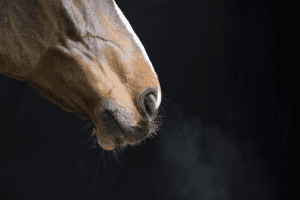Depending on who you ask, artificial intelligence is either going to be a blight or a blessing on the horse racing industry. The technology has quickly become a multi-trillion-dollar industry, with proponents claiming that it will revoltuionise everything from healthcare to entertainment, whereas others claim it’s more faddish, only ever able to plagiarise human creativity.
 What is clear, however, is that AI is being mooted as a predictive tool for horse racing. There is some merit to this, which we will discuss a little later, but there are also a lot of misconceptions about how AI works. Indeed, right now, we would suggest that anyone using AI tools does so with a degree of scepticism, or at least with by keeping a mind that it should be a complementary tool for analysis and not some kind of oracle.
What is clear, however, is that AI is being mooted as a predictive tool for horse racing. There is some merit to this, which we will discuss a little later, but there are also a lot of misconceptions about how AI works. Indeed, right now, we would suggest that anyone using AI tools does so with a degree of scepticism, or at least with by keeping a mind that it should be a complementary tool for analysis and not some kind of oracle.
To illustrate what we mean, consider the upcoming Kentucky Derby. Last year was arguably the zenith of the AI boom. In January, we saw the arrival of the GPT Store. In layman’s terms, this was an app store for AI tools, with each specialising in a specific area. And, of course, you would find some focusing on horse betting and predictions. As an aside, you would also find some GPTs that focus on horse care and injury analysis for all aspects of equestrianism, and they are actually worth checking out.
AI tools got the last Derby wrong
Nonetheless, before the 2024 Kentucky Derby, we saw a huge wave of articles with AI predictions for the big race. Yet, by and large, the predictions from the AI models were not much different than the online horse betting odds for the Kentucky Derby from sportsbooks. Indeed, this is not surprising, as AI analysis is going to be based on the algorithmic actuary that bookmakers use. Yet, if you scour through the articles, you will find that very few were able to pinpoint the eventual winner, Mystik Dan, as the winner.
We have noticed in 2025 that there are certainly fewer of these articles being pushed online. There are some, sure, many of which are trying to sell betting systems to fans, but we argue that many bettors have a degree of cynicism. As mentioned, there is some merit to using AI tools. They can look at vast streams of data – millions of statistics to formulate a strategy – yet AI cannot take that human leap of intuition or gut feeling. It also misses visual clues that only (for now) humans can see.
Horse behaviour is hard to predict
Yet, there are certain things about horse racing and horse behaviours in general that AI is not suited for. It can look at data, sure, but everyone who works with horses will tell you that is only a part of understanding how horses act. For the Kentucky Derby, you are talking about putting horses, the majority of whom will not have raced in such a large field of runners before, under unique conditions. There are other factors, too, including massive crowds. Once the race starts, it can be a bit chaotic as jockeys try to get into their favoured tactical positions. Because of the jockeying for position, the mistakes horses make, and everything else, we get the scenario that the best horses don’t always win.
And that, perhaps, is key. AI can only predict based on the data it has at hand. And once a race goes off, much of that data counts for little. We aren’t saying AI can’t be useful for predicting horse races, but there is work to do before it becomes essential to anyone betting on racing. Even if AI reaches the goal of human-level intelligence and understanding – a term known as AGI (artificial general intelligence) it’s almost certain it won’t be able to predict a race like the Kentucky Derby. It may tell you who is the fittest and fastest horse, but once the race begins, anythin
